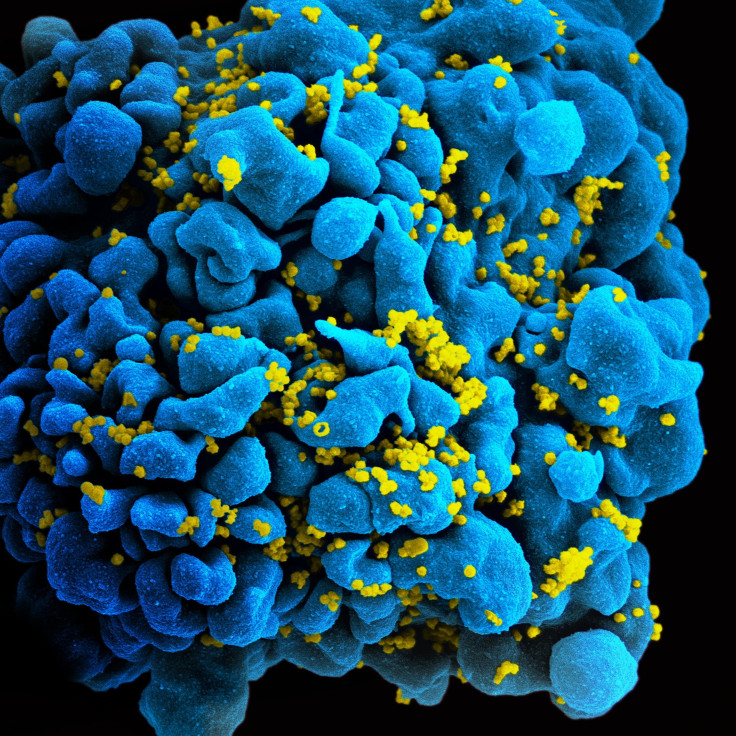The Evolution Of Viruses: Protein Folds May Offer Evidence That Viral Families Belong On The Tree Of Life

Since we first became aware of their existence in the late 19th century, viruses have been widely considered an almost alien-like counterpart to biological life — mobile, ever-evolving agents that carry genetic material but which are nonetheless unable to reproduce without hijacking the machinery of a cellular organism.
For many scientists, that inability to self-procreate has disqualified the virus from designation as a living being — a so-called fourth domain (superkingdom) of life — though that hasn’t stopped researchers from trying to understand and detail its origins. One possible and popular theory suggests modern-day viruses are the byproduct of an evolutionary fork right at the very beginning of life. These ancient viruses would have predated the very existence of cells, making them the most distant of relatives to any lifeform that erupted afterwards.
But now, a provocative new study published Friday in Science Advances has put forth the theory that viruses actually descended from ancient cells, and as such deserve inclusion in a broader “universal tree of life.”
As the researchers note, trying to trace the lineage of currently-existing viruses has largely been an exercise in futility. The International Committee on the Taxonomy of Viruses has identified seven orders of viruses, the broadest classification available — as a guiding post, humans belong to the order of primates.
“Under this classification, viral families belonging to the same order have likely diverged from a common ancestral virus,” the authors explained. “However, only 26 (of 104) viral families have been assigned to an order, and the evolutionary relationships of most of them remain unclear.”
That’s largely because the genes of a virus evolve and mutate drastically fast, often times erasing their genetic history as easily as a blizzard wipes away snowy footprints. Similarly, the sheer diversity of virus species, able to infect every other form of life, likely numbers in the millions, and thus far we’ve only been able to identify somewhere in the neighborhood of 5,000.
Due to these limitations, the researchers decided to focus on another slower-shifting aspect of the virus— the protein structures, or “folds”, genetically programed into every virus and cell. Though the specific makeup of a virus’s genes may change on the fly, their 3-D structure tends to stay the same for much longer, allowing the researchers to look much deeper back in time. And because these folds are ubiquitous in nature, it also allowed them to compare and contrast viruses with cells taken from all three superkingdoms of life: Bacteria, Archaea, and Eukaryota respectively.
In total, they studied the folds of 5,080 organisms, including 3,460 viruses, finding 442 folds shared by cells and viruses, and 66 that exclusively belonged to viruses.
"This tells you that you can build a tree of life, because you've found a multitude of features in viruses that have all the properties that cells have," said study author Dr. Gustavo Caetano-Anollés of the University at Illinois in a statement. "Viruses also have unique components besides the components that are shared with cells."
Gustavo Caetano-Anollés and his team believe that the most likely explanation for their findings is the existence of a “proto-virocell”, one that shared features with ancient cells. These proto-virocells, with segmented RNA genomes, may have been able to self-reproduce as well as manipulate others to do their bidding.
For whatever reason, the authors theorize, they decided to fully shed their “cellular nature” right around the time that life began to divide into the three main domains we recognize today. As each branch of the tree of life began to spread further and further out, viruses hopped along for the ride, evolving ever since to better infect their cousins. According to their findings, it's likely that modern day viruses can be traced to more than one ancestal lineage.
Their findings also suggest that viruses, from far being “pickpockets” of cellular life as previous researchers have posited, have continued to independently retool their genetic machinery as time has gone on. If anything, it’s the rest of us who owe a great debt to viruses, since many organisms, including people, carry “viral-like” elements that were likely integrated into their genes as a side-effect of infection.
As further support for viruses’ claim to life, Caetano-Anollés points to the recent discovery of “giant viruses”, amoeba-infecting viruses whose genetic complexity is astounding.
"These giant viruses were not the tiny Ebola virus, which has only seven genes. These are massive in size and massive in genomic repertoire," he said. "Some are as big physically and with genomes that are as big or bigger than bacteria that are parasitic."
Often found in the remote reaches of the world, these viruses may be the most unchanging descendants of the proto-virocell, since several species are able to create intricate “virus factories” in infected cells, cell-like structures which are “compartmentalized by a membrane, have ribosomes, obtain energy from mitochondria, and contain full information to successfully produce numerous virions.”
Rather than thinking of viruses as lifeless zombies without a cell nearby, the authors suggest that viruses should be considered “‘living’ organisms that simply survive by means of an atypical reproduction method that requires infecting a cell.”
"Viruses now merit a place in the tree of life,” said Caetano-Anollés. "Obviously, there is much more to viruses than we once thought."
Source: Nasir A, Caetano-Anollés G. A phylogenomic data-driven exploration of viral origins and evolution. Science Advances. 2015.



























